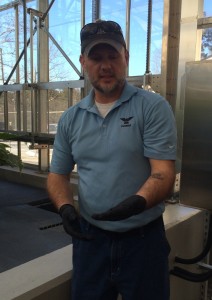Matt Wu
The world’s drinking water supply is running out. In just 15 years, we will need 40 percent more water than is available.
Emory University is tackling the water crisis head-on, both locally and globally. Emory is lessening the waste of drinking water through the utilization of water reclamation and the new WaterHub plant located just off of Eagle Row.
Mother Nature is the star. Instead of harmful chemicals, WaterHub harnesses the power of natural biological systems to obtain clean water.
This plant process extends the life cycle of used water by turning waste into a valuable resource. Reclaimed water, while not consumed in the U.S., can be distributed for tasks that do not require drinking water, such as plumbing and plant irrigation.
Water reclamation also cuts down on pollution since less energy is used to transport drinking water from distant places such as the Chattahoochee River, metro-Atlanta’s main water source. The use of nearby sources lowers the carbon footprint because water does not have to travel far.
As the first major water reclamation site in North America, Emory is the pioneer in major water recycling efforts. A difficulty in being first is Emory can’t model Harvard, Johns Hopkins, or other prominent institutions. However, WaterHub offers the university a novel and sustainable way forward.
The process begins when you flush the toilet, sending wastewater into the sewer line and back to Emory’s primary treatment system.
The primary treatment system uses reactors made of BioQuartz, a synthetic material, which acts as a surface where bacteria can grow. Live bacteria then have the job of converting unwanted compounds to harmless ones. They also minimize toxic hydrogen sulfide formation, which is deadly like cyanide or carbon monoxide.
The process of humans using bacteria for positive gains has actually been around for some time. If you’ve eaten yogurt, then you’ve benefitted from bacteria. Special bacteria turn milk into the healthy breakfast alternative!
After primary treatment, the water is transported to a greenhouse and lower sites, located just off of Eagle Row. These facilities have hydroponics, which are plants grown without soil.
“The magic is in the (plant) roots,” says Corey Hagemann, Emory’s WaterHub project manager. These roots provide optimal growth surfaces for bacteria, which complete the process of converting nitrates into nitrogen gas.
This process of combining hydroponics and live bacteria cultures is natural and self-sustaining. The healthy environment created here allows for the emergence of new species
Harmless snails thrive alongside the roots and bacteria since they have everything to survive. Hagemann compares the environment to diners at the Golden Corral where, “if you have air and chicken wings, then you have happy people.” The snails are evidently very happy.

(pictured on left, Corey Hagemann holding a snail found living on the hydroponic plant roots)
Before the water can be reused, two more phases of the treatment process must occur. The first involves settling and eliminating unwanted solids from thewater. At this point, bacteria are present in the water so some live cultures are saved and recycled back into the initial steps, which utilize them.
The rest of the water is subject to cleaning out through small amounts of chlorine and ultraviolet (UV) radiation. UV is high intensity radiation, the same type of radiation that causes sunburn. It can kill microorganisms and damages DNA to prevent potential growth.
Finally, the reclaimed water can be used for non-potable (non-drinkable) tasks like washing clothes or stored for a later time.
It’s only a matter of time before reclaimed water becomes popular and is widely used!

18 responses to “Post WaterHub blogs here”